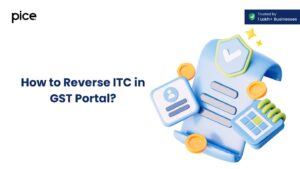Form GST RFD 06 : Order Passed for Final GST Refund
- 3 Apr 25
- 8 mins

Form GST RFD 06 : Order Passed for Final GST Refund
Key Takeaways
- Form GST RFD-06 is the official refund sanction or rejection order issued after verifying refund claims.
- It follows the initial application in Form RFD-01 and reflects the final decision of the GST officer.
- The form outlines key details like claimed, sanctioned, inadmissible, and net refund amounts.
- Refunds are processed through multiple forms, with RFD-06 being central to approval or denial.
- Timely filing, correct documentation, and follow-ups are crucial to avoid delays or rejections.
The Goods and Services Tax (GST) system in India guarantees that taxpayers can get reimbursements for overpaid taxes in a number of situations. Form GST RFD-06 is one of the structured types of refund application forms that the government has devised to help with this. Following the processing of a taxpayer's claim for a GST refund, the tax authorities issued this document as an order.
It indicates if the refund application has been approved or denied and details the authorised amount. Individuals and businesses requesting GST refunds need to be aware of the consequences for financial planning, the issue procedure, and the use of Form GST RFD-06.
In this guide, let us go through the individual components of form GST RFD-06 to develop a vivid idea about its usage.
Introducing the Details of Form RFD-06

Form GST RFD-06 is an official refund order issued by the GST authorities after verifying a taxpayer’s refund application. It serves as a confirmation that the refund claim has been processed and includes details of the approved or rejected amount.
This form is issued as a response to Form GST RFD-01, which is the initial refund application submitted by taxpayers. Based on the assessment, the tax officer either sanctions the refund fully, partially, or rejects it. The order issued through RFD-06 is a crucial document in the GST refund mechanism and ensures transparency in the process.
Particulars of the 6 Points in the Table of RFD-06: GST Refund Order
After a taxpayer issues an application of refund, a designated GST officer needs to process the refund request within 60 days. When the refund request is valid, an order is issued via RFD-06 electronically.
A standard refund sanction order covers the below-mentioned details:
- Amount of Refund Claimed
This simply refers to the amount claimed by a refund applicant while raising their claim for a refund.
- Refund Sanctioned on Provisional Basis
It points to a specific segment that mentions the refund sum provisionally stated in form RFD-04.
- Refund Amount Inadmissible
Any amount or transaction that does not qualify for a tax refund according to the law is mentioned in this section accompanied by the specific reason.
- Gross Balance Refund Payable
This section calculates the following difference:
Refund claimed by the applicant (minus) provisional refund as marked in RFD-04 (minus) inadmissible refund
- Adjusted Amount Against Outstanding Demand
Under this head, one’s gross GST refund is reduced by considering their existing liabilities payable to the GST department.
- Net Amount to be Settled
Finally, this is the balance refund that has to be paid out by the GST Council to the person filing a refund claim application.
Steps Involved in Processing an Applicant’s Refund Request

Below, you can go through the individual steps included in the processing of a refund application:
Step 1: An applicant files their refund application using form GST RFD-01 on the GST portal. One can find this form on the dashboard of the Tax Department website as a pending work item.
Step 2: Next, a Refund Processing Officer processes the GST refund applications within 60 days of submitting the request.
Step 3: On the basis of scrutiny, the following things can happen:
- The respective Refund Processing Officer will acknowledge an issue of refund via Form GST RFD-02 within 15 days if the application is deemed to be complete in all aspects.
- A deficiency memo will be forwarded by the Refund Processing Officer in Form GST RFD-03 if they notice any mistake in the refund application form. When this memo is issued, the concerned taxpayer will witness an auto re-credit of the claimed refund sum in their electronic credit/ cash ledger.
Step 4: Whenever applicable, a Refund Processing Officer can reject a refund application by issuing a legal online notice seeking clarification against recovery of an erroneously granted refund. In such cases, they will generate Form GST RFD-08 to substantiate the rejection of refund.
Step 5: After the issuance of Form GST RFD-08, the taxpayer must respond with Form GST RFD-09 online via the GST portal. This action should be taken within 15 days of the notice issuance.
Step 6: If the applicant qualifies for provisional refund then the tax official can issue Form GST RFD-04 within 7 days.
Step 7: Refund Processing Officer will generate a rejection order or refund sanction in Form GST RFD-06.
Step 8: Eventually a payment order must be produced in Form GST RFD-05 if a refund needs to be sanctioned via Form GST RFD-04 or Form GST RFD-06.
Step 9: The Refund Processing Officer has the authority to withhold the approved refund amount by issuing form GST RFD-07 (Part B). If this scenario arises, the concerned tax official will not acknowledge form GST RFD-05 until the withhold sanction is active.
Step 10: An order for re-crediting the balance of electronic credit or cash ledger on turning down of refund claim needs to be issued when:
- The corresponding amount has been debited from the ledger at the time of applying for a refund.
- The Refund Processing Officer has rejected any refund sum by issuing an order via form GST RFD-06.
Common Challenges in Receiving Form GST RFD-06
Processing Delay: Document verification may cause refund approvals to take longer.
Application errors: Form GST RFD-01 errors might result in a delay or rejection.
Mismatch in Supporting Documents: Any disparity in tax payments, invoices, or ITC claims may give rise to problems.
Technical Issues: Refund applications may be impacted by outages on the GST platform.
It is important to understand that taxpayers must guarantee correct paperwork, prompt filing, and frequent follow-ups with the tax department in order to prevent delays.
Conclusion
Claiming GST refunds properly is an important aspect of the country’s latest taxation system. Timely refund acknowledgement is vital for flawless tax administration as it allows trade upon the release of blocked capital.
If you find the filing procedure of form GST RFD-06 tricky, then consider getting help from tax GST professionals. Additionally, you can refer to this guide for a better understanding of the individual aspects of this table.
 By
By 
















